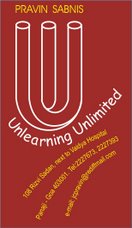One
day, in a pile of objects all jumbled up together, he found an old bicycle seat
right next to a rusty set of handlebars. In a flash, they joined together in his
head. He welded them together to create the association with the seat appearing
like the head of the bull and the handlebars making for the horns. Bull's Head is
a famous artwork by Pablo Picasso, created in 1942.
Picasso brought together two
things to make a third. This practice of bringing together two things is called
bisociation. Arthur Koestler coined the term in order to make a distinction
between the routine skills of thinking on a single plane and the creative act,
which always operates on more than one plane.
Koestler states that ‘every creative act involves bisociation, a process that brings together and combines previously unrelated ideas’. While association refers to previously established connections among ideas, bisociation involves making entirely new connections among ideas..
Bisociation involves a readiness to connect to the unconnected as we approach every routine situation with an open mind. Most importantly bisociation is a constant innovation as seen in the Gilette razor which kept adding blades, springs, lubricating strips to create a greater product.
Koestler states that ‘every creative act involves bisociation, a process that brings together and combines previously unrelated ideas’. While association refers to previously established connections among ideas, bisociation involves making entirely new connections among ideas..
Bisociation involves a readiness to connect to the unconnected as we approach every routine situation with an open mind. Most importantly bisociation is a constant innovation as seen in the Gilette razor which kept adding blades, springs, lubricating strips to create a greater product.
We can associate with bisociation
in everything we do. Like Picasso, we first need to see the bisociation first
in our mind and then put it together in reality. So whether it is in design,
art, science or humour, we can choose to use our right brain and unite the
parts to impact a new whole.
First envision, follow with action... that’s Bisociation…
Unite to impact two parts to create a new innovation!
First envision, follow with action... that’s Bisociation…
Unite to impact two parts to create a new innovation!
- Pravin K. Sabnis
Goa, India.




No comments:
Post a Comment